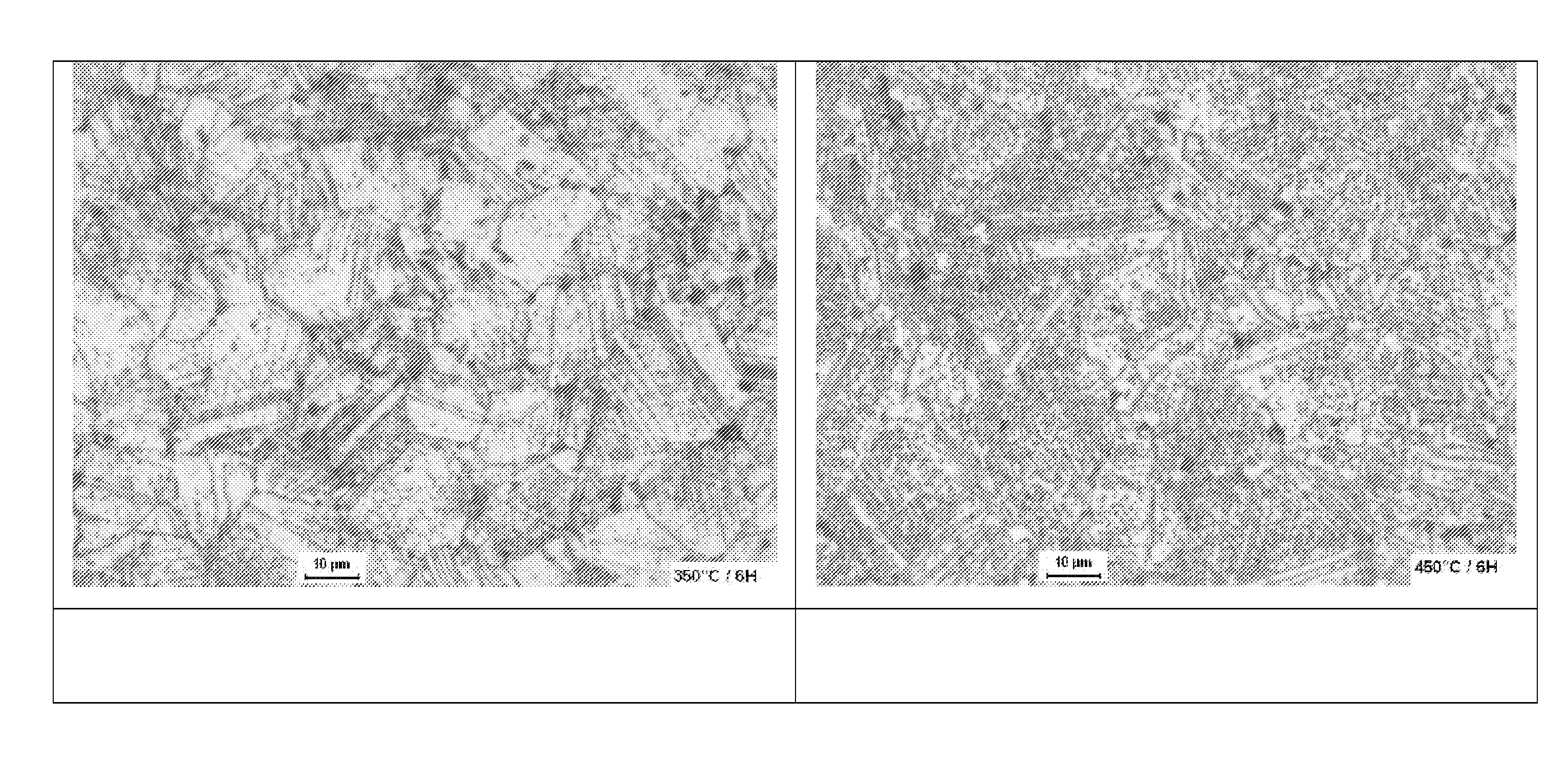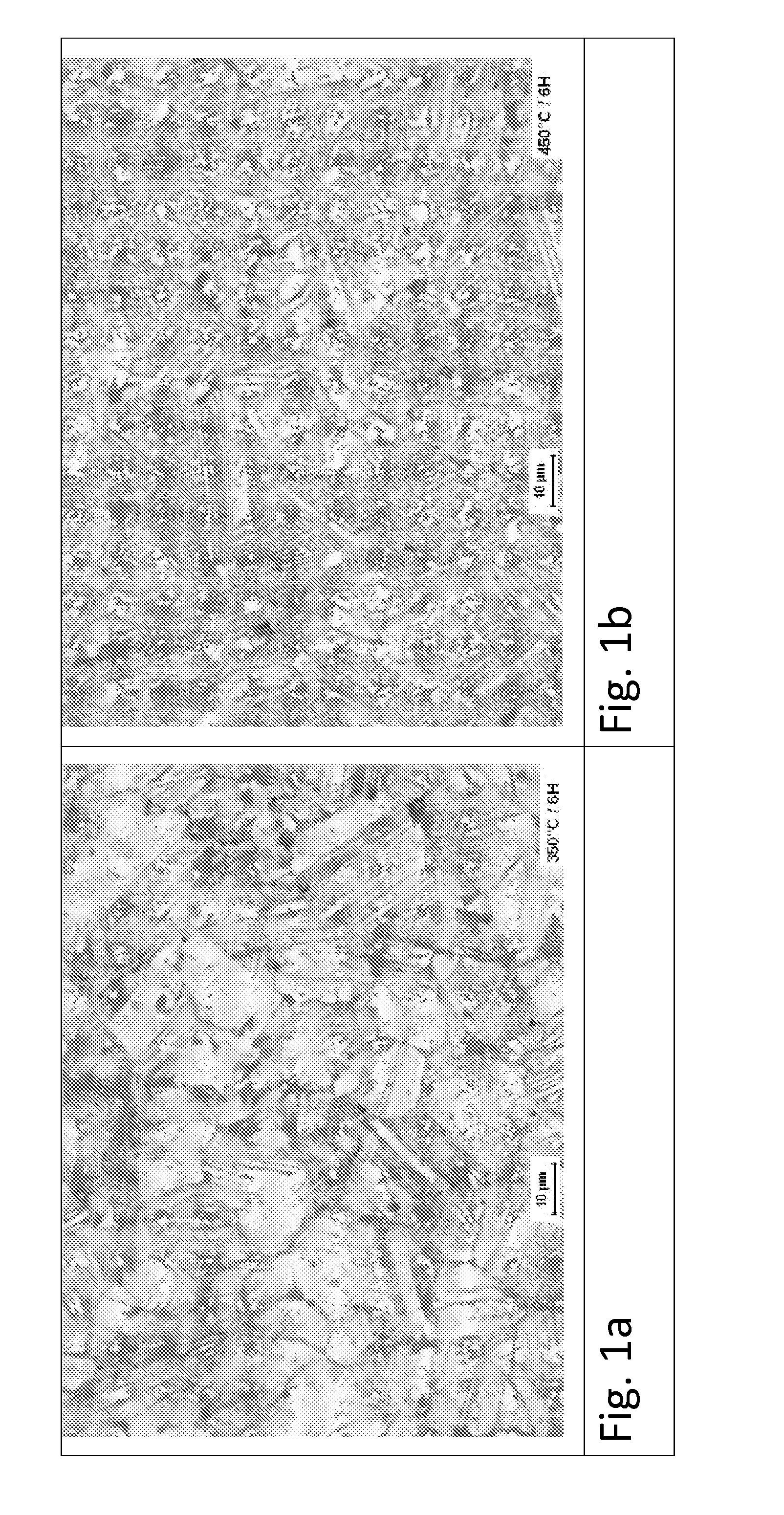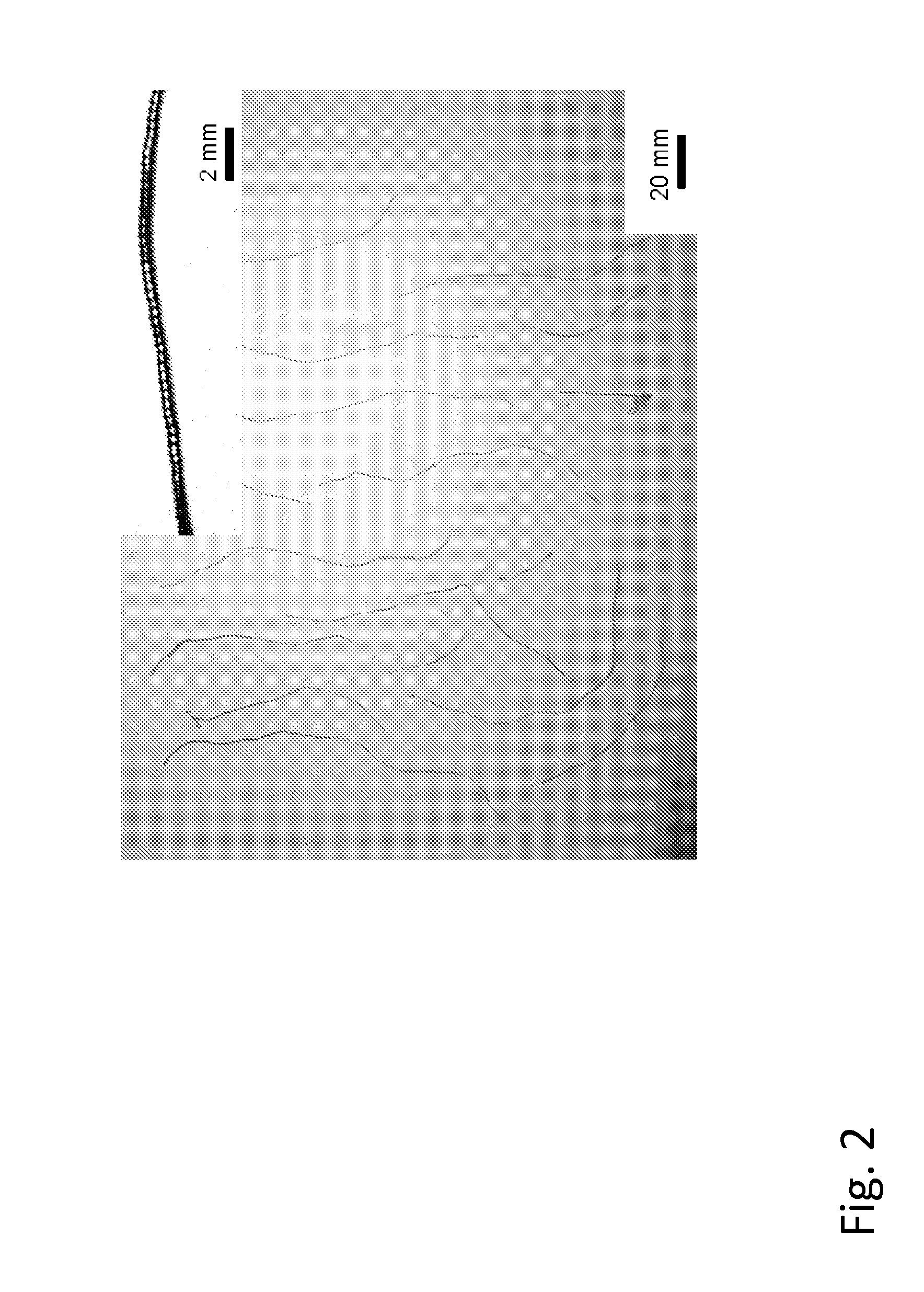Cu-Ni-Zn-Mn Alloy
a technology of mn alloys and cu-ni-zn, which is applied in the field of wrought cu-ni-zn (nickelsilver) alloys, can solve the problems of inconvenient cu-based alloys, significant disadvantages of zn alloys of grey color, and inability to meet the strength requirements of tip materials, etc., and achieves good machinability performance in free-machining operations, high electrical conductivity, and increased strength
- Summary
- Abstract
- Description
- Claims
- Application Information
AI Technical Summary
Benefits of technology
Problems solved by technology
Method used
Image
Examples
Embodiment Construction
addresses the above mentioned points in more detail.
[0014]Corrosion Properties
Dezincification is understood as the dissolution of Zn in Cu—Zn alloys and can be regarded as the most severe corrosion effect in Cu-alloys. More precisely Zn dissolves by a di-vacancy diffusion process leaving a “hole” in the crystal lattice of the surface layers [J. Y. Zou, D. H. Wang, W. C. Qiu, Electrochmica Acta, 43, (1997), 1733-1737]. Thus, Cu-alloys free of Zn show superior corrosion resistance than brasses. In analogy, alpha brasses are more corrosion and dezincification resistant than the Zn-rich beta-brasses. Cu—Ni—Zn alloys show in comparison to brasses similar corrosion resistance as alpha brasses, but have due to the higher nickel content a better tarnish resistance and resistance to stress corrosion cracking. Little information is available on the corrosion properties and the influence of minor alloying elements in Cu—Ni—Zn alloys, but can be extrapolated from the effects known to brasses. T...
PUM
| Property | Measurement | Unit |
|---|---|---|
| temperature | aaaaa | aaaaa |
| temperature | aaaaa | aaaaa |
| elongations | aaaaa | aaaaa |
Abstract
Description
Claims
Application Information
 Login to View More
Login to View More - R&D
- Intellectual Property
- Life Sciences
- Materials
- Tech Scout
- Unparalleled Data Quality
- Higher Quality Content
- 60% Fewer Hallucinations
Browse by: Latest US Patents, China's latest patents, Technical Efficacy Thesaurus, Application Domain, Technology Topic, Popular Technical Reports.
© 2025 PatSnap. All rights reserved.Legal|Privacy policy|Modern Slavery Act Transparency Statement|Sitemap|About US| Contact US: help@patsnap.com



